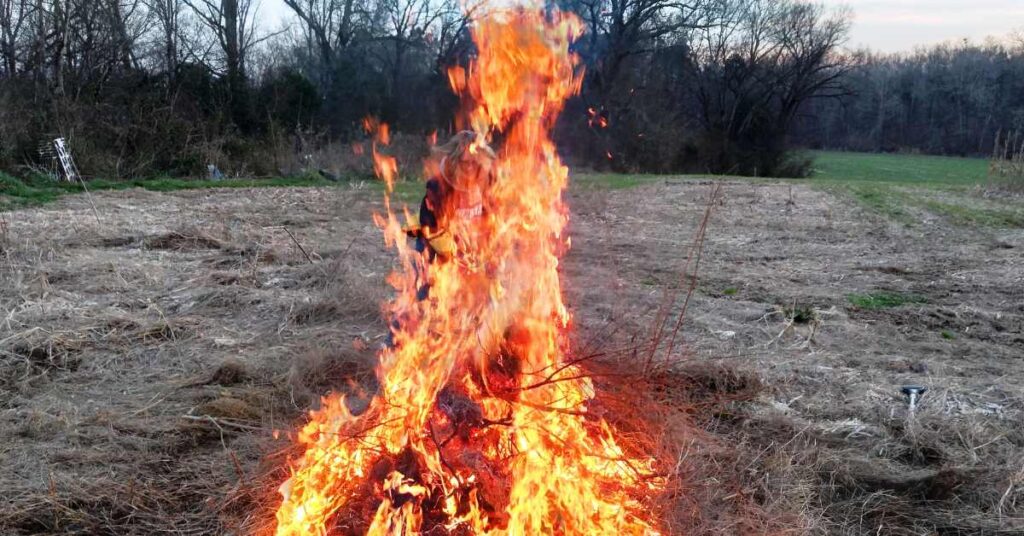
In one of the nature-oriented Facebook groups I’m in, a land-management newbie was talking about how they were frightened to do a controlled burn of their property (for weed reduction). They were afraid the fire would get away from them, and were thinking, rethinking, and (I think) over-thinking the difficulty of doing the burn. As dozens discussed the difficulties and problems of doing a burn (including: “Don’t do it yourself! Leave it to the professionals!”), I suggested that they do a little bit at a time.
My final comment was: “You don’t have to do acres and acres at a time. I do a little at a time, take my time with it, and make it an experience I enjoy.”
Thinking about that comment later, I mentioned to my wife that everything we do out in and with Nature can be looked at as a chore, as a job, as a burden, as boring, as hard work. But what if we consider that we’re in a stewardship and a partnership with the Earth? What if we listen to her and to God to tell us what we should be doing? When we do that, when we go into our hearts to ask, “What’s best for me, for the Earth, for Nature, for us?”, those moments of pulling weeds or burning invasive grasses or trimming trees or digging or planting or anything to do with the Earth can be meditative. Those acts can make us feel like when we do charity work. They can fill us with joy and happiness and a connection to the Earth.
Working in and with Nature doesn’t have to be toil. Imagine if we looked at pulling weeds the same way that we looked at doing a yoga meditation, or if we looked at planting trees the same way that we looked at working out. Or if we listened to the Earth and did what it told us to do, and we looked at that process the same way that we would look at listening to a symphony or walking through an art museum or doing something creative.
If we do those type of Nature-helping acts in concert with what Nature and the Creator wants us to do, we not only are in better tune with the Earth’s rhythms, but we gain a greater appreciation, and we put ourselves in harmony with what God wants us to do on the properties we’re on, small or large. And that completely changes our attitude. Such creative, in-concert actions put us into a meditative, contemplative, Zen state where we’re more open to receiving joy, happiness, a deep sense of accomplishment, charity, and revelation.
I’m not saying that we have to work outdoors or be doing something to help Nature all the time, but I don’t think that connecting with the Earth always has to look like sitting and meditating. As we seek to listen and to act on what we hear from the Creator and from Nature, we become more united with God and His intentions.
Resource:
My wife has a new book which will be released in early 2023, “Finding Peace in a Turbulent World: Living in Sacred Nature.” It’s a good resource on this topic. She has a free course you can watch now on the subject that shares some of the things we’re learning from Nature about finding peace, joy and fulfillment. When you sign up for the course, you’ll be notified when the book is ready.
